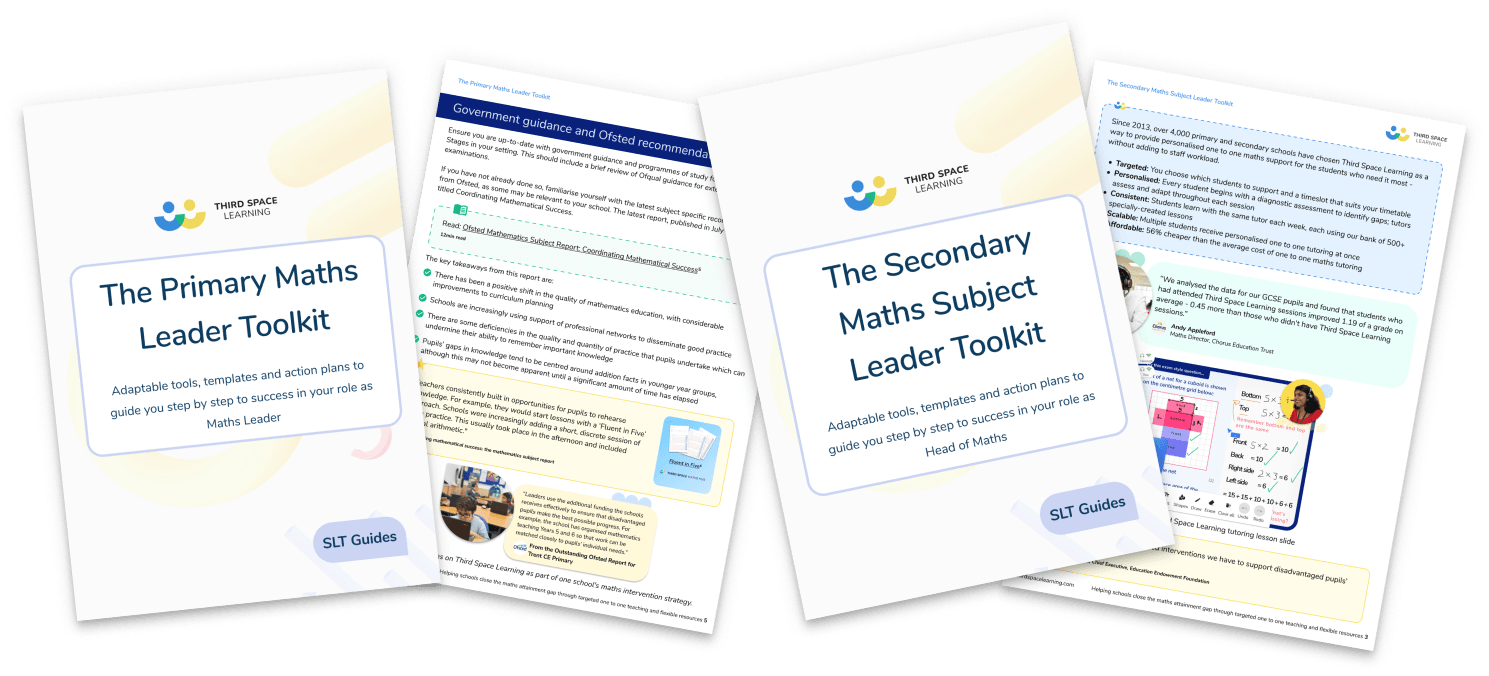Free resource
Maths Subject Leader Toolkits

Adaptable tools, templates and action plans to guide you step by step to success in your role as Head of Maths.
- Essential guidance for new and veteran Maths Leaders on improving maths teaching and learning.
- Audits and templates to help you identify what works well, and what needs improving.
- Tips for raising the profile of maths in your school.
- Staff development strategies for the whole department.
- Primary and Secondary versions available.
Download your free resource today
To receive this resource and regular emails with more free resources, blog posts and other Third Space Learning updates, enter your details below.
You can unsubscribe at any time (each email we send will contain an easy way to unsubscribe). To find out more about how we use your data, see our privacy policy.
“Never heard of them? Time to sort your education life out and get invested in the Third Space Learning world!”
Class Teacher